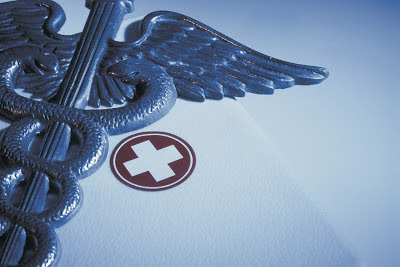Report forecast the global wound biologics market
to grow at a CAGR of 20.63% during the period 2016-2020.
Mechanical, chemical, thermal, and radiogenic
damages can cause cuts, tears, and punctures in the skin, blood vessels,
nerves, muscles, internal organs, bones, and joints. Wounds are of two types:
acute and chronic. The reparative process in acute wounds occurs at a
predictable and expected rate leading to faster healing, while it fails to
occur in a predictable amount of time in chronic wounds.
Biologic wound healing process helps re-establish
the innate repair mechanisms and may involve the application of biological
agents such as plant-derived active biomolecules having antimicrobial,
antioxidant, and anti-inflammatory attributes. Biologic dressings prevent
evaporative water loss, protein and electrolyte loss, heat loss, and wound
contamination. Wound biologics such as granular wound beds permit autolytic
debridement for the healing process.
The report covers the present scenario and the
growth prospects of the global wound biologics market for 2016-2020. To
calculate the market size, the report considers the revenue generated from the
sales of:
- Skin substitutes
- Growth factors
The market is divided into the following
segments based on geography:
- Americas
- APAC
- EMEA
According to the report, chronic wounds such as
diabetic foot ulcers, leg ulcers, and pressure ulcers lead to complications
such as infections, ulceration, and insufficient blood supply and take longer
duration for wound healing. This increases the demand for advanced wound care
products such as skin substitutes and growth factors to improve the healing
process, resulting in greater sales of these products.
Further, the report states that most of the wound
biologics available in the market are regenerative medicine- and tissue
engineering-based products. Procedures based on these products are risky,
increasing the need for clinical trials to prove their safety and efficacy.
Lack of clinical data for safety and efficacy of these products also hinders
their use by physicians and surgeons.
Global Wound Biologics Market 2016-2020, has
been prepared based on an in-depth market analysis with inputs from industry
experts. The report covers the market landscape and its growth prospects over
the coming years. The report also includes a discussion of the key vendors
operating in this market.
key players in the Global Wound Biologics
Market: Acelity, Integra LifeSciences,
Organogenesis and Smith & Nephew.
Other Prominent Vendors in the market are: Avita
Medical, BioDlogics, ConvaTec, Cytori Therapeutics, Intercytex, MacroCure,
Molyncke Health Care, Nuo Therapeutics, Osiris Therapeutics and Regenerys.
Market driver
- Prevalence of chronic diseases
- For a full, detailed list, view our report
Market challenge
- Limited availability of clinical data
- For a full, detailed list, view our report
Market trend
- Advances in technology
- For a full, detailed list, view our report
Key questions answered in this report
- What will the market size be in 2020 and what will the growth rate be?
- What are the key market trends?
- What is driving this market?
- What are the challenges to market growth?
- Who are the key vendors in this market space?
- What are the market opportunities and threats faced by the key vendors?
- What are the strengths and weaknesses of the key vendors?
Spanning over 54 pages and 29 Exhibit “Global
Wound Biologics Market 2016 - 2020” report covers Executive summary, Scope of the
report, Market research methodology, Introduction, Market Overview, Market
Landscape, Market segmentation by product, Geographical segmentation, Market
drivers, Impact of drivers, Market challenges, Impact of drivers and
challenges, Market trends, Vendor landscape, Appendix.
For
more information Visit at: http://mrr.cm/oCE
Find all Diagnostics report at : http://www.marketresearchreports.com/diagnostics

No comments:
Post a Comment
Note: only a member of this blog may post a comment.